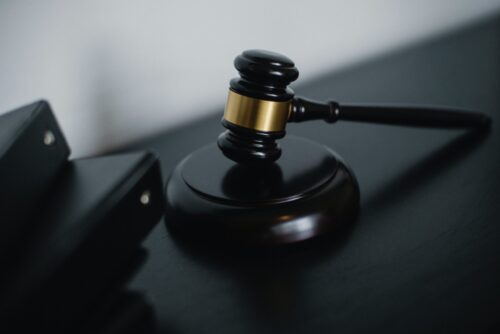
INTRODUCTION TO INTELLECTUAL PROPERTY LAW FOR GENERAL PRACTITIONERS
Reprinted from Traps For the Unwary Practioner by Mark J. Ingber, Esq.
Trademarks
In addition to patent protection, your client can also rely, to a certain extent, on trademark protection. A trademark is a distinctive word., name, symbol or device or any combination thereof which is used to identify and distinguish your client’s goods from those manufactured or sold by others and to indicate the source of those goods. Once you have obtained trademark rights for your client on a particular mark for use on a product, no one can use that mark (or a similar mark) on the same or similar products. Some examples of registered trademarks are:
- BMW® – Imported sportscars.
- COCA COLA® – Soft drinks and other products.
- BURGER KING® – Restaurant services.
- CALVIN KLEIN® – Clothing.
Generally, trademark rights are secured upon proper use of the mark in commerce. In order to ‘minimize the business risk of infringing on the rights of a prior user, it is highly recommended that your client register its mark with the Patent and Trademark Office. Such federal registration provides it with a bundle of rights that are not available for unregistered marks, including national protection against confusingly similar marks. Further, your client would then be permitted to use the ® symbol, which provides notice to its competitors that its mark is registered.
Before recommending to your client that it begin using the mark on its product or registering it. a trademark search should be performed by a trademark attorney to determine whether the mark can be used and to register the mark. Such trademark search is separate and apart from a corporate name clearance search, which does not give that corporation the right to use that designation in commerce. The superior trademark rights of prior users of the name are not superseded by any acceptance of registration by the Secretary of State, which may give a false sense of security. Indeed, New Jersey enacted N.J.S.A. 14A: 2-2 to codify this principle:
“The filing in the office of the Secretary of State of the certificate of incorporation of a domestic corporation or the issuance by the Secretary of State of a certificate to a foreign corporation authorizing it to transact business in this State shall not preclude an action by this State to enjoin a violation of this section or any action by a person adversely affected to enjoin such violation or the use of a corporate name in violation of the rights of such person, whether on the principles of unfair competition or otherwise. The court in any action may grant any other appropriate relief.”
Beginning in 1989, it became possible to protect a mark your client merely intended to use on a new product. even before the product is actually on the market. 15 U.S.C. Section 1051(b). A trademark application can now be filed in advance of any use based on an “intent to use” the mark. A qualified trademark attorney can help you decide if this form of protection is right for your client
In addition to words and symbols, the law of trademarks can protect a product’s non-functional appearance, known as its trade dress. Accordingly, if a product’s design is inherently distinctive or haS acquired recognition in the marketplace based on that design, the theft or infringement of that design can be halted by court action. For example, Ferrari was able to prevent competitors from stealing the design of its Ferrari Daytona Spyder classic sports car based on its distinctive trade dress. Actions against “copycats” for infringement of a product’s trade dress can be highly effective.
Copyrights
Finally, copyright protection might be available to protect your client’s design. Copyright protection applies to a work’s ornamental and artistic features. Accordingly, if the product has such features, then it is ripe for copyright protection.
Protectiori is automatic upon creating the work. However, the work should be federally registered to provide additional rights not offered by an unregistered work. For example, the Copyright Act requires that a copyright claim be registered with the Copyright Office before an action for infringement may be instituted. 17 U.S.C. Section 411(a) (although courts have been lenient and have permitted infringement actions to proceed if the Plaintiff had merely filed for a copyright prior to instituting suit).
One violates or infringes a trademark if and when there is a likelihood of confusion between the respective marks. Copyrights are violated or infringed by copying. Proof of access and substantial similarity is generally necessary to establish copyright infringement
Mark J. Ingber, Esq. practices extensively in the area of Intellectual Property (patents, trademarks, copyrights, and unfair competition), with offices in Livingston and Garden City, New York. He is a frequent speaker at Intellectual Property seminars for the Essex, Morris, and Union County Bar Associations. ©1997, Essex County Bar Foundation. Reprinted with permission.
Publishing and technical assistance provided by New Jersey Lawyers Diary and Manual.
CONTACT OUR ESSEX COUNTY, NEW JERSEY FIRM
Whether you’re looking to register a copyright or trademark, are facing a dispute, or otherwise require the assistance of an experienced New Jersey intellectual property lawyer, you’re in the right place. Contact Ingber Law Firm today to schedule your initial consultation with our skilled and dedicated legal team.